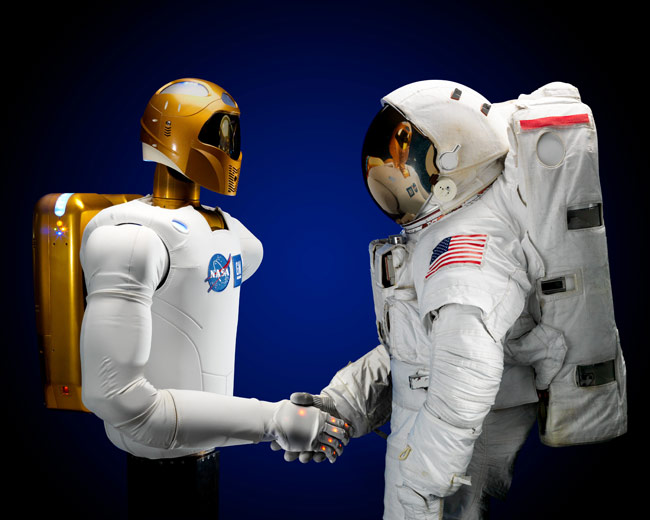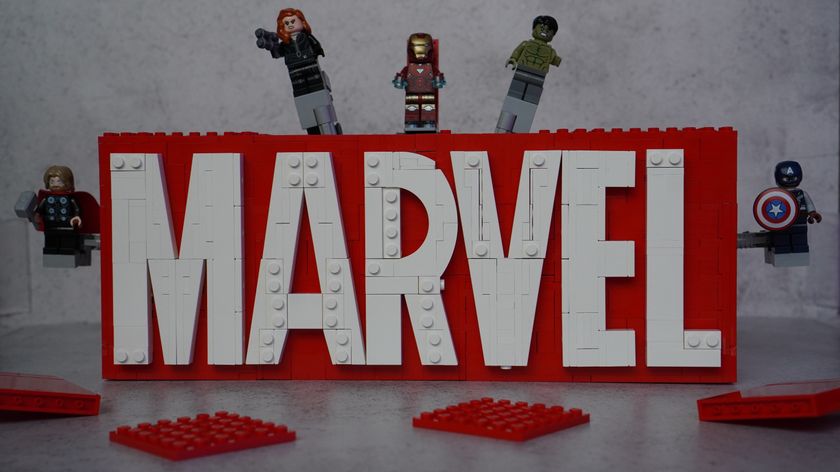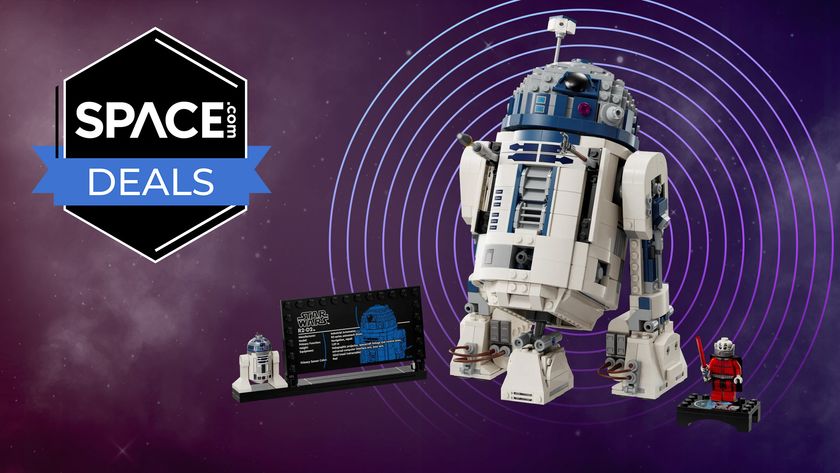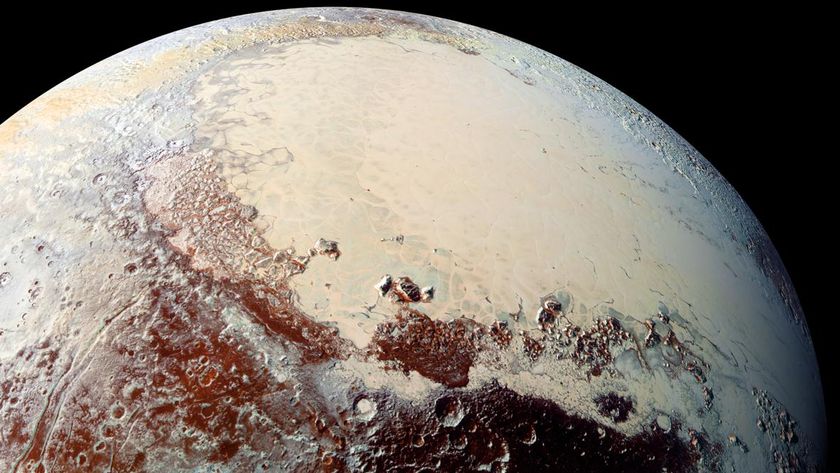
Life aboard the International Space Station will get a little cushier when a robot butler arrives at the orbiting lab later this week.
The space shuttle Discovery, slated to launch on Thursday afternoon (Feb. 24), is carrying a humanoid robot named Robonaut 2 up to the orbiting lab. Robonaut 2 — also known as R2 — is a prototype robotic assistant designed to help human crews with chores and repairs. Researchers will use the bot as a test bed to help develop more advanced robotic helpers in the future.
"This project exemplifies the promise that a future generation of robots can have both in space and on Earth, not as replacements for humans but as companions that can carry out key supporting roles," John Olson, director of NASA's Exploration Systems Integration Office, said in a statement. [Photos: NASA's Robonaut 2 Space Droid]
Robonaut 2: The basics
Robonaut 2, which will become the first humanoid robot in space, looks a bit like a boxer's training aid.
The $2.5 million space bot consists of a head and torso, along with a pair of dexterous arms that pack down into a puncher's pose. R2 stands 3 feet, 4 inches (1.01 meter) tall and weighs about 330 pounds (150 kilograms).
R2 is a joint project of NASA and carmaker General Motors. It's the product of a cooperative agreement to develop a robotic assistant that can work alongside humans, whether they're astronauts in space or workers at GM plants here on Earth, NASA officials have said.
Get the Space.com Newsletter
Breaking space news, the latest updates on rocket launches, skywatching events and more!
The bot is made primarily of aluminum and steel. Its head houses five cameras — including one infrared camera in the mouth — to provide stereo vision and depth perception. The torso contains 38 PowerPC processors, and R2 carries a backpack that can be filled with batteries or a power conversion system. [Infographic: Meet Robonaut 2]
Each of R2's arms can carry about 20 pounds (9.1 kg), and its hands have articulating fingers and thumbs. The robot, which builds on NASA's work with its first Robonaut project, should be able to use the same tools astronauts on the space station use, agency officials said.
The robot's job
Astronauts will install Robonaut 2 inside the station's U.S. Destiny laboratory and put it through some test paces. The goal is to see just what the robot helper can do — how it can work side-by-side with astronauts to make station operations run more smoothly.
"We're going to use Robonaut on orbit to learn more about how robots can take over astronaut tasks — some mundane things and then potentially some of the more dangerous tasks," said Scott Higginbotham, payload manager for Discovery's STS-133 mission.
Robonaut 2 was designed to use both internal and external interfaces, so future bots could eventually be installed on the station's exterior to aid in spacewalks and other difficult or dangerous tasks. However, R2 itself will likely stay inside, officials said, since the bot lacks protection against the extreme cold of space.
As advanced as it is, R2 represents an early stage in the effort to get robots more involved in space travel and exploration.
"I think we see Robonaut as the program does — a technology demonstration," said astronaut Michael Barratt, a mission specialist for STS-133. "This is very much a first step, but we’ll be identifying and mapping some of the tasks and capabilities that Robonaut demonstrates over the years."
You can follow SPACE.com senior writer Mike Wall on Twitter: @michaeldwall. SPACE.com staff writer Denise Chow (@denisechow) contributed to this story from NASA's Kennedy Space Center in Cape Canaveral, Fla.
Join our Space Forums to keep talking space on the latest missions, night sky and more! And if you have a news tip, correction or comment, let us know at: community@space.com.

Michael Wall is a Senior Space Writer with Space.com and joined the team in 2010. He primarily covers exoplanets, spaceflight and military space, but has been known to dabble in the space art beat. His book about the search for alien life, "Out There," was published on Nov. 13, 2018. Before becoming a science writer, Michael worked as a herpetologist and wildlife biologist. He has a Ph.D. in evolutionary biology from the University of Sydney, Australia, a bachelor's degree from the University of Arizona, and a graduate certificate in science writing from the University of California, Santa Cruz. To find out what his latest project is, you can follow Michael on Twitter.
Most Popular





